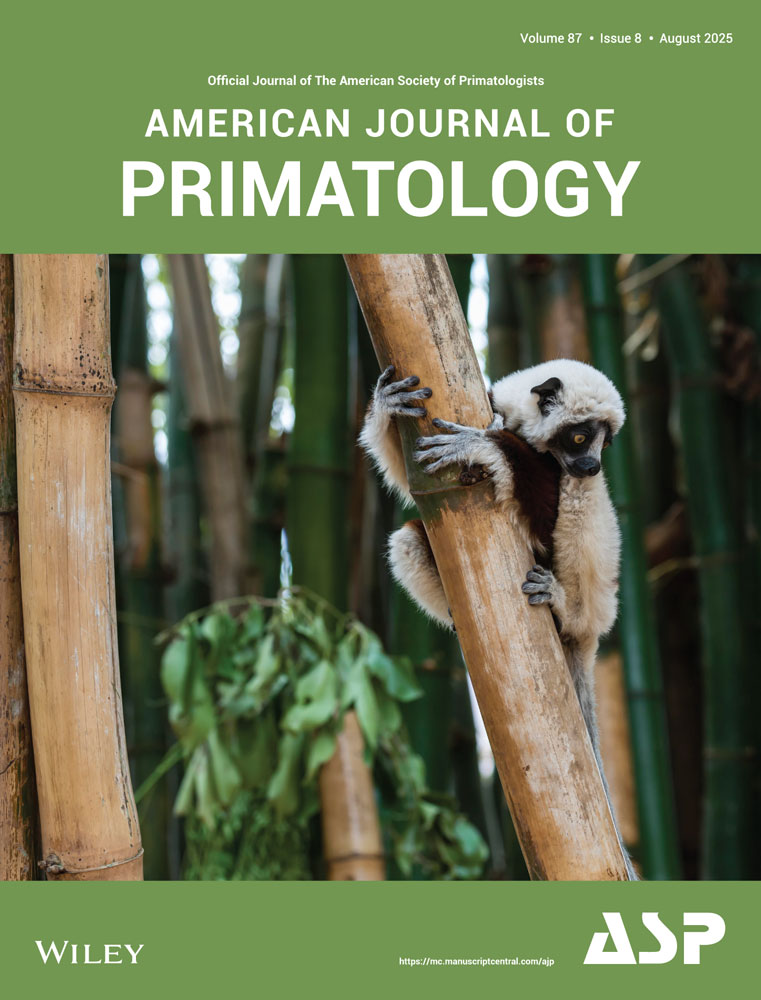Stone-tool usage by Thai long-tailed macaques (Macaca fascicularis)
Abstract
In January and March of 2005, we conducted surveys of long-tailed macaques at Piak Nam Yai Island, Laem Son National Park (9° N 34–35′, 98° E 28′), Ranong Province, situated in southern Thailand. Two of the three troops of long-tailed macaques found on the island were observed using axe-shaped stones to crack rock oysters, detached gastropods (Thais tissoti, Petit, 1852), bivalves (Gafrarium divaricatum, Gmelin, 1791), and swimming crabs (Thalamita danae, Stimpson, 1858). They smashed the shells with stones that were held in either the left or right hand, while using the opposite hand to gather the oyster meat. Some monkeys used both hands to handle the stones. According to Matsuzawa's 1996 hierarchical classification of tool usage (levels 0–3), the tool usage by Thai long-tailed macaques could be characterized as either level 1 (cracking rock oysters with stones) or level 2 (cracking drifting mollusks and crabs with stones by placing them on a rock). Our discovery of stone-tool usage by Thai long-tailed macaques provides a new point of reference for discussions regarding the evolution of tool usage and the material culture of primates. Am. J. Primatol. 69:1–7, 2007. © 2006 Wiley-Liss, Inc.




